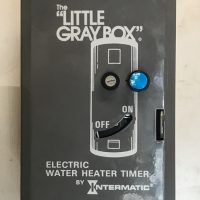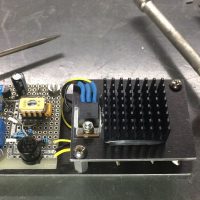Another little problem around the house that can use a little creative circuitry to make it better. Do I really have to do it? No. I do it because I can, and because it is fun!

In Waikoloa solar hot water is an obvious addition to the house, we had it installed within a couple months of moving in. Considering electric power is about $0.40/kWh on the island, and tropical sunlight is quite intense, the use of solar to heat our water has been good money saving move… Long, hot showers with no guilt!
Once or twice a year we will get a period of heavy clouds and the water temperatures will fall to the point we need to turn on the electric back-up heating element in order to have that hot shower. Like most solar setups the storage tank has a electric element that will heat the water when needed.
Continue reading “A Better Solar Water Heater Electric Back-Up Timer”


